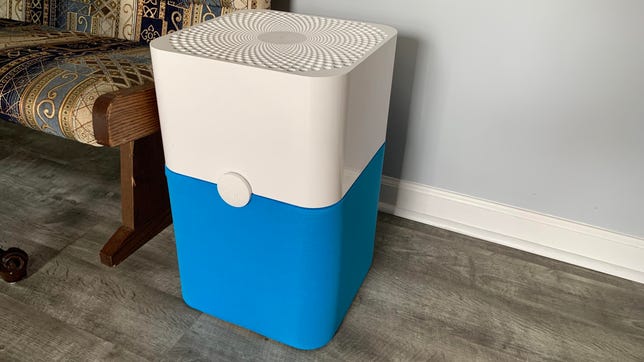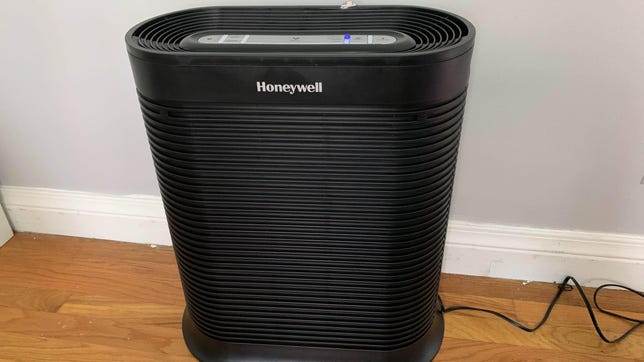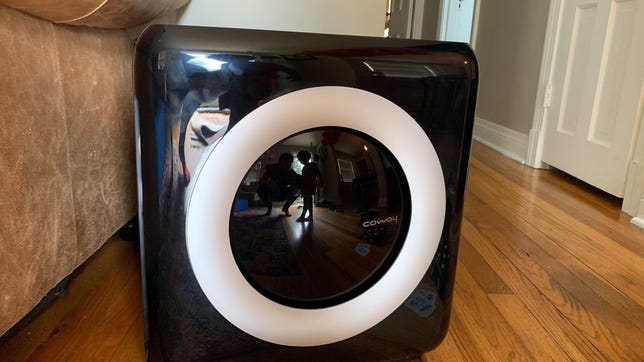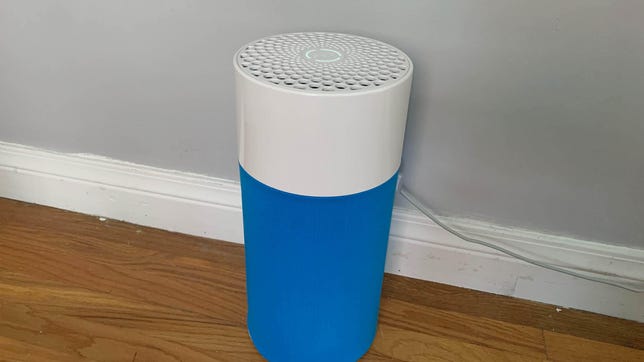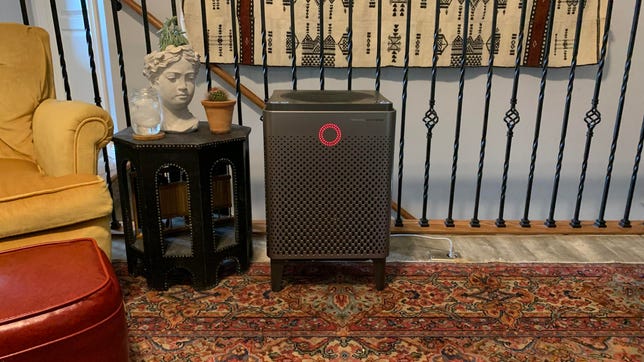[ad_1]
Whether you need relief from seasonal allergies, want to eliminate pet odors or worry about the negative impacts of air pollution indoors, an air purifier is an awesome device that can help you out. We’re about to dive headfirst into the dry summer months, and if you want a home that’s easy to breathe in, snagging your own air purifier is a must.
With so many machines available with various methods of air purification, choosing the best one for you and your family requires some research and expert guidance. First consider how much you can comfortably invest in air purification. Will you need an ionic air purifier or a full home filtration system? Do you want a purifier with an activated carbon filter? I’m here to answer those questions and help you sort through your options.
Why you can trust our reviews on the best air purifiers
I’ve researched the products and interviewed experts in the field of indoor air quality and air purification. I’ve also tested the features of 15 of the most popular models. I considered factors like whether each air purifier has an air quality monitor or clean air delivery rate, along with how frequently you need to replace the filter. I also looked at whether the unit has a washable filter and how much a replacement filter costs.
After careful tests and consideration, these are the top picks for best air purifier options based on our research. Any one of the air purifiers below should improve your indoor air quality, filter out smoke and airborne particles while also providing fresh air.
David Priest/CNET
Blueair’s excellent large-room air cleaner looks great, runs fairly quietly and — most importantly — cleans large rooms efficiently. The Blue Pure 211 Plus weighs 13 pounds and has a simple interface: The touch-sensitive button on the front of the device lets you set it to low, medium, high or off. That’s it.
While it would be nice if it had a few more smarts, like an automatic setting that responds to air quality, Blueair has invested where it matters: the cleaning technology. The True HEPA filter is certified to clean the air in spaces up to 560 square feet, and the activated carbon filter helps remove airborne pollutants. That much power at this price is pretty impressive, and it’s worth considering whether this is the best air purifier for your needs if you have a large room.
David Priest/CNET
Honeywell’s air purifier is a little more expensive than other HEPA models, but it can cover a larger space than almost any other purifier I tested: 465 square feet. Despite its clunky design (this thing weighs a hefty 21 pounds), the Honeywell Home is actually one of the quieter models around. If you have a midsize room, this might be the best air purifier for you.
The Honeywell Home’s aesthetic isn’t my favorite, but you get good control for setting timers and checking whether the prefilter or filter needs replacing. If you’re looking for great basic performance for a reasonable price, you can’t beat this Honeywell HPA300.
David Priest/CNET
After months of use in my own home, Coway’s HEPA air purifier cemented itself as my favorite available HEPA air cleaner. Prices for these devices have fluctuated over the past year, but the list price is solid for the 361-square-foot coverage it offers. In addition to its coverage, the Coway’s ion filtration technology that removes pet dander, dust and other allergen particles sets it apart from many other purifiers in the price range. The Coway’s striking, retro design was also one of my favorites among the devices I tested. In short, it’s a solid product without all the complicated extras some other devices offer. Just plug it in, turn it on and forget about it.
Personally, while using this air purifier brand, I’ve experienced fewer allergy symptoms during typically difficult seasons for me. A colleague’s mother also recently bought a Coway for smoke in her home during the West Coast wildfires, and she noticed an immediate improvement in the air quality.
While the ionic filtration technology isn’t a huge plus, it also won’t produce significant ozone, as tested by the California EPA. If you want an air purifier for a midsize room, Coway’s HEPA air purifier is one of the best air purifiers around with one of the most adventurous looks.
David Priest/CNET
The Blueair Blue Pure 411 is a simple, straightforward purifier with smart design and solid bang for your buck. You get particle and carbon filtration (the activated carbon filter removes odors, pet dander, airborne allergens and gaseous airborne pollutants) that will work well in a 160-square-foot room, making it the overall best air purifier for small rooms. Some devices, like Sharp’s Air Purifier, don’t even offer that much cleaning power at nearly twice the price.
The Blue Pure has different colored prefilter sleeves for the outside of the device, so it will fit into almost any color palette, and its single-button interface is as intuitive as it gets. The device is also light, with middle-of-the-road noise production. Besides the noise, the only real downside of the Blue Pure is the lack of extra goodies, like timer buttons.
David Priest/CNET
OK, if you’ve got the money and want a super powerful air purifier — or if you’d rather get one purifier to cover your whole house than get one for each room — Coway’s Airmega 400 might be the best air purifier for you. This thing costs a pretty penny, but you get air cleaning coverage of 1,560 square feet.
The Airmega comes with a lot of perks: You get a real-time air quality indicator, a variety of fan speed settings (the highest of which is surprisingly quiet), smart settings that adjust fan speed according to air quality and a range of timers. It’s also larger than many competitors, weighing nearly 25 pounds.
Most homes are going to be better served with one or two smaller Coway or Honeywell air purifiers, but if you have a specific need for a lot of coverage, the Airmega might be the right call for you.
How do air purifiers work?
Before you make a purchase, it’s important to understand the basic mechanisms that air purifiers use to clean your air. To get a handle on these methods, I talked to Richard Shaughnessy, director of Indoor Air Research at the University of Tulsa.
According to Shaughnessy, who has a doctorate in chemical engineering, most air cleaners run your air through a filter designed to catch indoor air pollutants like dust particles and dust mites you might otherwise inhale. These are usually High Efficiency Particulate Absorbing filters and they’re designed to capture 99.97% of airborne particles sized 0.3 micron or larger. A HEPA filter reliably removes indoor air pollution such as smoke (including cigarette smoke and smoke from wildfires), pollen, spores, dust mites and other particulate matter that pollutes home environments.
Activated carbon offers another type of filter, which captures odors like pet odor, volatile organic compounds and gaseous pollutants that can slip through a HEPA filter. “[A carbon filter is] good … to an extent,” said Shaughnessy, “but they need to have a sufficient amount of carbon. You don’t want breakthrough happening, where the carbon becomes fully saturated and it releases what was captured back into the air.”
According to multiple researchers I talked to, most consumer air purifiers simply don’t have enough activated carbon to be an effective odor filter for more than a short period of time.
Read more: Will Air Purifiers Protect you From COVID-19, Wildfire Smoke and Pollen?
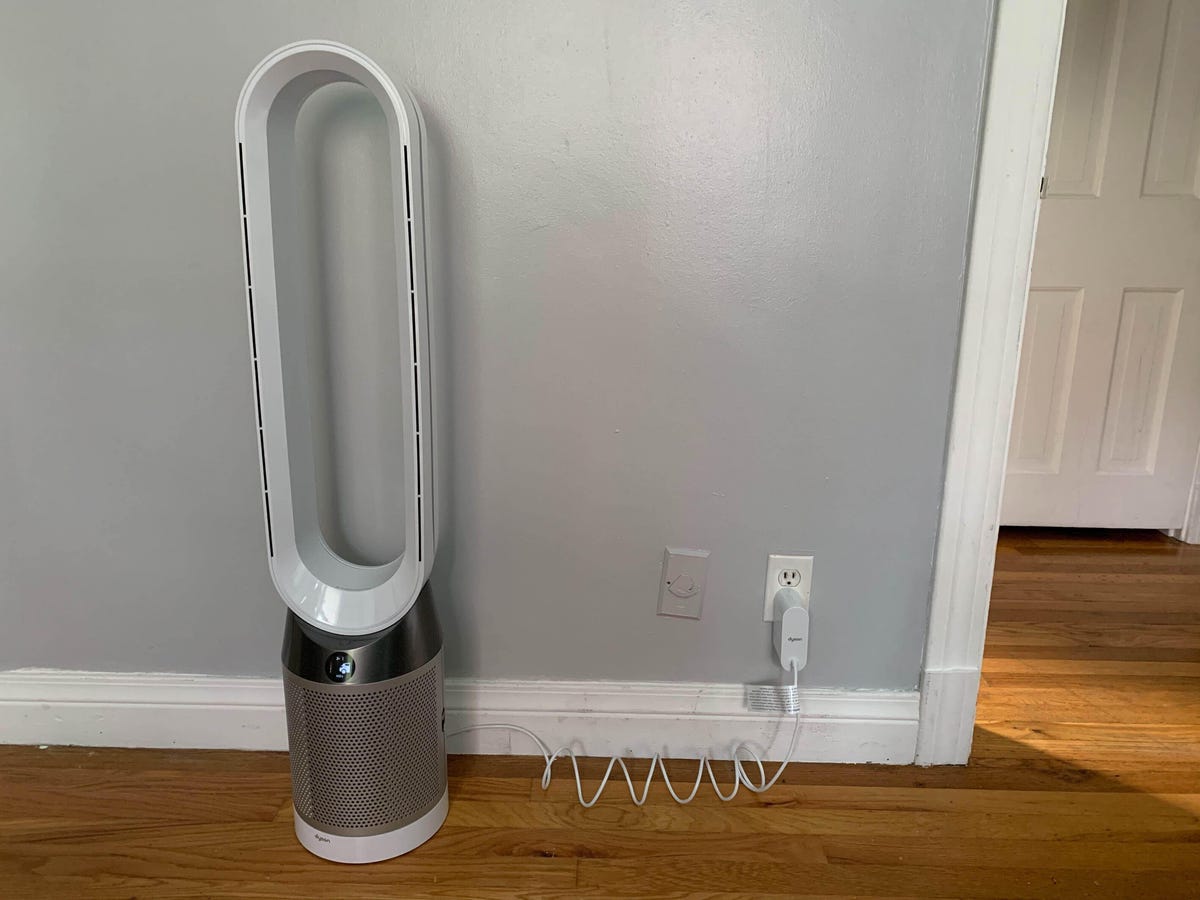
Dyson’s $550 air purifier doesn’t offer a CADR rating at all.
David Priest/CNET
Another common type of air cleaning works via ionic filtering. These filters can be effective, according to Shaughnessy, but ionic purifier models have a number of shortcomings: Some don’t actually remove air pollutant particulates from the home, but rather cause them to attach themselves to surfaces around the home. Others must be cleaned consistently, or they might begin to emit ozone — itself a pollutant.
While some ionic purifiers are effective and standards for them have risen significantly in recent years, the benefits an ionic purifier offers over a HEPA filter are in many cases negligible, particularly given the risk an ionizer occasionally poses.
How we test air purifiers
Outside of a controlled lab environment, air purifiers can’t be tested. That said, certain certifications are standardized, meaning HEPA air purifiers will consistently capture what they claim to capture — as those claims have been tested by a third party. Likewise, you’ll want to keep an eye out for the AHAM Verified Clean Air Delivery Rate, which tells you how much air a purifier can process in a given time frame. Not every company uses this standard, but most do.
I tested each air purifier on this list in my own home over the course of multiple months, checking how each advertised feature worked, testing the volume and monitoring it for any operational problems. As for the actual particle capture and air cycling rate, I relied on the certifications.
Making recommendations gets a little more complicated when companies don’t list a CADR, or when they employ proprietary air filtration methods.
Some major players, like Dyson and Molekule, offer their own standards. That doesn’t necessarily mean that their devices are inferior, but rather that they require extra scrutiny. In these cases, I looked at the explanations presented by the companies themselves and talked to third-party specialists. By and large, such devices — even if they do accomplish what they claim — still end up overpriced compared with competing products with more readily accessible evidence backing up their claims. (I look more closely at both of these brands later in this article.)
It’s also important to note that many of the best air purifier models I tested have been going in and out of stock in recent months, given the demand for such devices during the pandemic and amid wildfires. While that might mean some of the options above are out of stock, we’ve decided to keep our recommendations — and the rationales behind them — posted, so you can use them to find the best product for you. For now, though, our recommendations for the best air purifier options are based on the included prices, and we would recommend avoiding sellers offering the same devices for significantly different price tags. We’ll update this list periodically as we review new products.
For the devices above, I primarily considered the power for the price (that is, the higher the CADR and the lower the price, the better). Secondarily, I looked at additional cleaning modes, the helpfulness of controls, the general design and the noise level. The best air purifier looks sleek enough to fit into most modern decor, can operate as desired with minimal fiddling and can thoroughly and quietly clean your air.
The rest of the field
The above recommended air purifiers are only five of the 15 devices I tested. Other HEPA cleaners, like the $100 Levoit Core 300, the $78 Bissell and the $100 GermGuardian all offer only so-so power for their prices. All five of those models offer a carbon filter or charcoal filters for removing airborne contaminants like odors, pet dander and gaseous pollutants, but the filters in all of them contain only a few ounces of the medium, meaning they won’t last long with regular use. Filter replacement timing will vary. They are not among the best air purifier options.
The IQAir HealthPro Plus wasn’t among the devices I tested, in part because I was looking at more affordable options. But IQAir’s $800 air cleaner is one of the few devices on the market to contain multiple kilograms of activated carbon, which will filter out odors and gaseous pollutants much more effectively than most consumer air cleaners under $1,000, according to specialists I talked to.
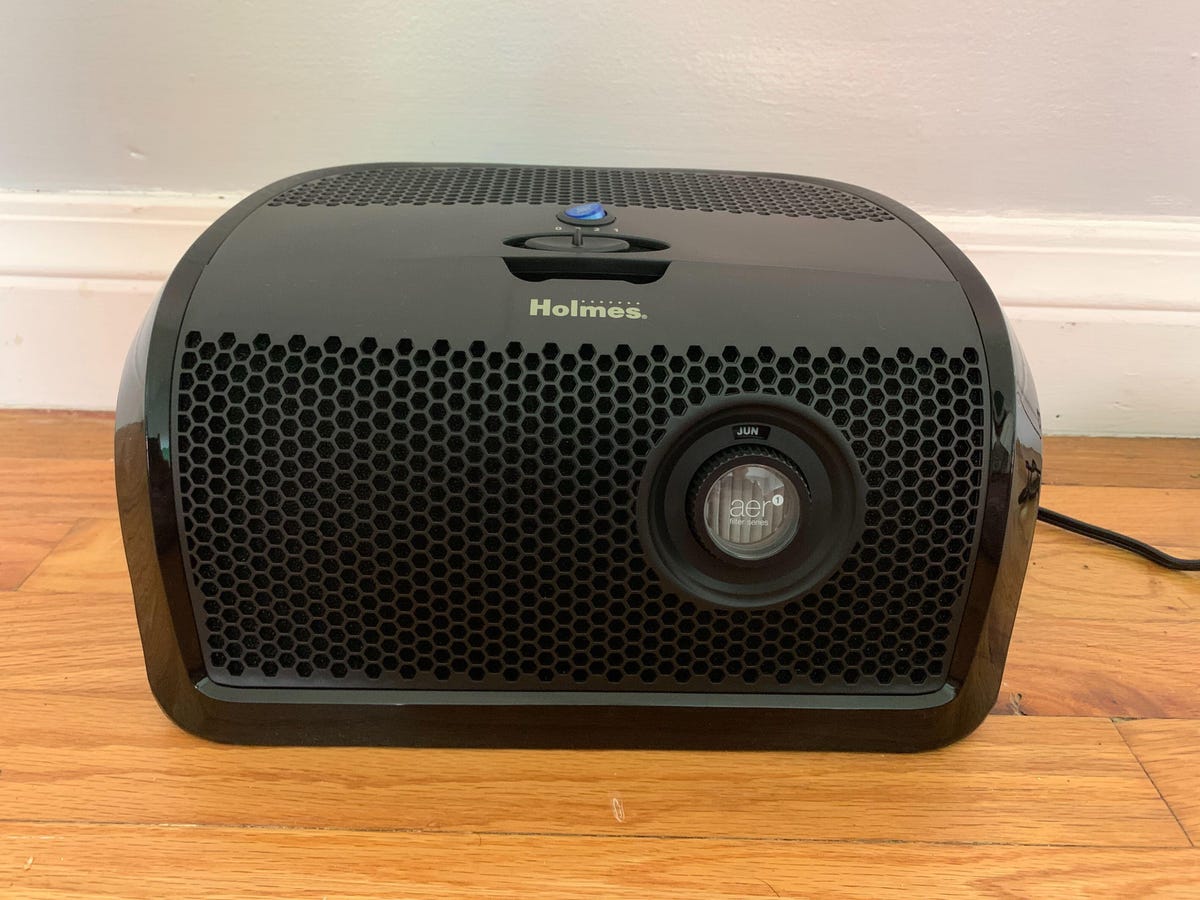
The Holmes air purifier is a cheap option for your desktop.
David Priest/CNET
Two devices I tested featured an ionic filter: the Coway AP-1512HH I mentioned above and the $178 Sharp FPK50UW. The Sharp’s CADR rating is only 259 square feet, which is significantly lower than the Coway’s and not great for the price.
The Partu ($50) and Holmes ($55) air purifiers were the most affordable devices I tested and they both provide a true HEPA filter option for small rooms. If you are looking for a portable air purifier, I could see them being used on a desk in an office, for instance, to great effect. But both felt a little cheap and neither gave an official CADR, so I would recommend saving up for something a little more reliable if air purification is a high priority.
What about Molekule and Dyson?
You may have heard of another air purifier called Molekule, made by a company of the same name, which grabbed headlines for its attractive design and proprietary filtration technology back in 2017 — and was even, strangely enough, sold at the Museum of Modern Art in New York. What about that?
The Molekule presents a complicated problem: Its maker claims its proprietary PECO air filter destroys airborne particles much smaller than 0.03 micrometer, but it filters air at such a slow rate that, even if the company’s claims are accurate, it cleans the air very inefficiently compared with HEPA air purification models (as Consumer Reports rightly pointed out in its highly critical 2019 review).
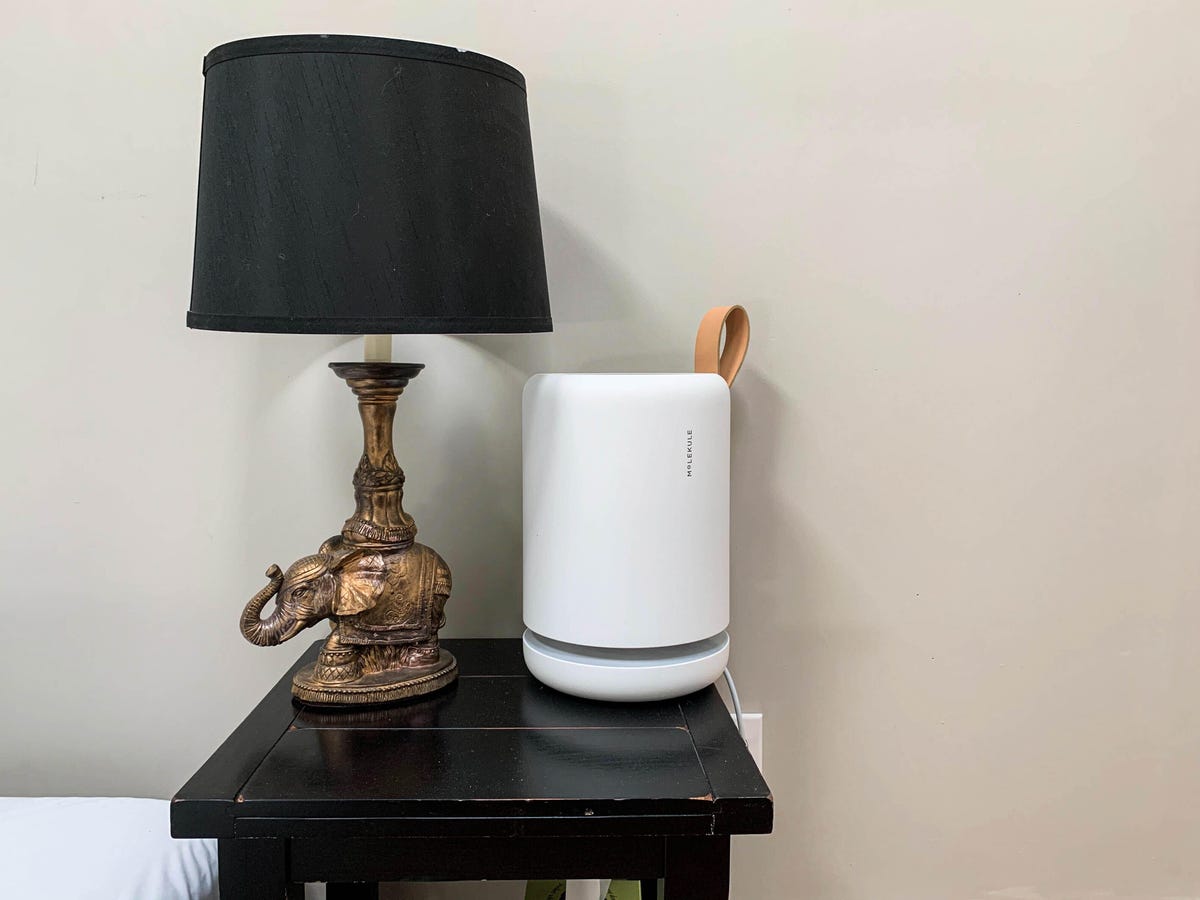
Molekule was forced by the National Advertising Board of Review to retract misleading claims it made in its advertisements.
David Priest/CNET
On the other hand, the Lawrence Berkeley National Laboratory, one of the premier indoor air research centers in the country, released a government-funded study showing that the PECO effectively filters out volatile organic compounds — that is, compounds that can easily become gaseous pollutants in the air — that a HEPA filter does not capture. Reviewers at Consumer Reports and the New York Times’ Wirecutter, which called the Molekule’s larger model “the worst air purifier we’ve ever tested” and the Air Mini “the second-worst,” didn’t appear to test VOC reduction.
We can’t recommend the Molekule Air Mini Plus, which I tested, as a result of these problems coupled with a 2020 decision by the National Advertising Review Board to force a retraction of many of Molekule’s misleading advertising claims. That said, the air purifier does appear to address a problem that most HEPA filtration cleaners simply don’t: the presence of gaseous pollutants in the home. Such pollutants have plenty of sources, whether from paint, furniture, cleaning solutions or even some composite boards. For that reason alone, Molekule’s eye-catching brand is worth keeping tabs on — especially as its latest air cleaner was approved by the FDA as a Class II medical device.
Dyson’s devices offer a similar but slightly different problem. Some of its air purifiers, such as the Dyson Pure Cool TP04, which I tested, use a HEPA filter, but provide no CADR. A Dyson spokesperson told me, “CADR as measured by some current methods is not an accurate representation of a real home,” and thus the company has developed its own testing procedures “to replicate a more realistic setting.” That includes a testing room that has over double the footprint of AHAM’s testing rooms, along with nine sensors placed around the space (versus AHAM’s single sensor). The Dyson TP04, perhaps unsurprisingly, performs well according to Dyson’s own metrics.
In addition, the Dyson TP04 air purifier features a handful of extra goodies, including an oscillating fan to help circulate clean air around larger rooms, an app with home air quality data and a small but nifty display. Our tower fan reviewer really liked these features of the TP04. But is all that worth the price bump from, say, Coway’s purifier?
For most people, the answer is likely no — especially considering that Dyson’s devices haven’t stacked up especially well against the competition in third-party testing, such as Wirecutter’s, where the TP04’s performance was in line with the far more affordable Blueair 411.
Do you even need an air purifier?
Given COVID-19, wildfires and pollution, we may be more aware of air quality today than ever before. But air purifiers aren’t necessarily a panacea for these problems. As mentioned before, in home settings, virus transmission usually occurs through close contact, which means an air purifier probably won’t protect you if a roommate or family member in the same house gets sick. That said, purifiers may help businesses and restaurants trying to improve the air in their indoor spaces.
For households with an asthmatic or otherwise immunocompromised child, air purifiers have significant benefits, according to Dr. Elizabeth Matsui, a professor of population health and pediatrics at the University of Texas, Austin’s Dell Medical School.
Matsui has extensively researched the effects of air purifiers on children with asthma and says the devices can make a big difference — though they’re no substitute for well-ventilated and smoke-free homes or proper medical care. Furthermore, there is no evidence to suggest that air purifiers diminish the chance of children developing asthma.
In short, air purifiers are popular for a reason: They mostly do what they say, cleaning the air inside your home. And depending on your health needs, or if you live in a home with many sources of air pollution, cleaner air and better air flow might really make a big difference for you or your children. If you think the benefits of an air purifier might help someone in your own home, it’s always worth talking to an allergist. If you’d rather just grab an air cleaner and call it a day, you can’t go wrong with the recommendations above.
Still have more questions about air purifiers and whether you’re ready to buy one? Check out our full air purifier FAQ for more info.
Air purifier FAQs
Here are the answers to more common questions about air purifiers. If you have any others, feel free to reach out on Twitter (@david_p_priest) or you can email me from my author page (click the little orange envelope).
Do air purifiers help with COVID-19?
The short answer is yes. HEPA air purifiers capture virus particles, removing them from the air. But don’t count on air purifiers to protect you from virus particles if you’re cohabitating with a contagious person. When I talked with Dr. Richard Shaughnessy, the director of Indoor Air Research University of Tulsa, he said transmission of COVID usually happens due to close contact with an infected person. If you’re sitting on a couch and chatting with someone who is infected, an air purifier across the room isn’t going to remove all the harmful particles exhaled before they have a chance to reach you.
Are air purifiers a waste of money?
Air purifiers generally do what they say: they filter particulate out of the air effectively — especially if they use a HEPA filter. But most of us already have a mechanism to filter the air effectively: the respiratory system. As Dr. Alex Berezow, a microbiologist and vice president of Scientific Communications at the American Council on Science and Health, pointed out in a blog post, “Living within the tiny air sacs in your lungs (called alveoli) are immune cells known as macrophages. These “big eaters” gobble up bacteria, viruses, fungi, and whatever other debris happens to find its way into the lungs.”
In short, air purifiers work, but unless you live in a particularly polluted environment or you or your children are immuno-compromised, you probably don’t need one.
Do air purifiers increase or decrease oxygen in the room?
No, they don’t. Air purifiers generally use fans to blow the air inside the room through an internal filter or chamber, which captures particles floating in the air. But this process does not affect the actual composition of the air, adding or removing oxygen or other gases.
Where is the best place to put an air purifier?
The best place to put an air purifier is in a room equal to or smaller than its CADR rating. If a device can purify the air effectively in a room equal to or smaller than 250 square feet, you shouldn’t put it in the main hub of a large house. As for locations within those rooms, you’ll want to make sure the purifier’s intake and output aren’t blocked by walls or furniture. That means out in the open, and ideally in locations where there is consistent airflow to help with cycling — which probably means near doorways or vents.
Correction: A previous version of this article incorrectly described the Blueair 411’s features. The Blueair 411 has a “change filter” indicator and is AHAM-certified for a 161-square-foot room.
More recommendations for your home
[ad_2]

